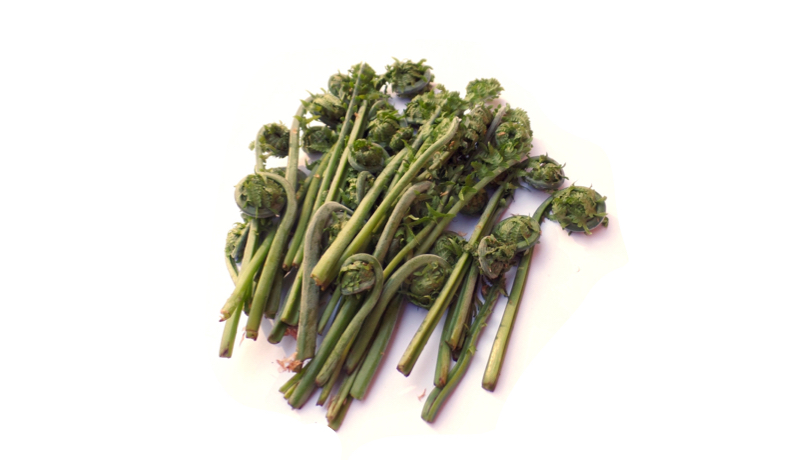Your cart is currently empty!

Right now, in the late May forest, the green fronds of ostrich fern are unfurling; so why not catch the fiddleheads while some of them are still curled in a ball! This plant is called Matteuccia Struthiopteros, which combines both Latin “struthio” – ostrich, and Greek “pteris” – wing. This plant also goes by the name fiddleheads, that comes from the fact that rolled coiled tips of it resemble the violin handle. You snap fresh heads and fill your basket with nutritious green, just make sure you take only one or two stems from one plant.
Fiddleheads are a great source of vitamins and minerals
This vascular plant grows all over the north eastern United States along river banks and low damp areas. It provides us with 17 minerals, vitamins A and C, magnesium, iron, potassium, phosphorous, niacin and zinc. It’s also a source of Omega 3 and Omega 6. Ostrich fern is the only kind of fern that I use as food, as some other ferns are quite toxic. Make sure you identify it correctly: the stem has a very deep groove down the center, similar to celery, other ferns don’t have it. This fern is also not fuzzy at all.
Boil Fiddleheads for 15 minutes, or steam them for 10 to make sure all the bitterness and extra tannins are gone. It tastes delicious, and is quite similar to asparagus. They can be served and used many different ways: in an omelet, stir-fry, pizza, salad, and they can be pickled or frozen. The perennial crown and root rhizomes come back every year. Make sure you step careful around them, and they can get squished and damaged. This cool plant doesn’t have seeds; instead it produces spores that are stored on the underside of the leaves in structures called sporangia. These spores get released the following spring after overwintering.
Leave a Reply